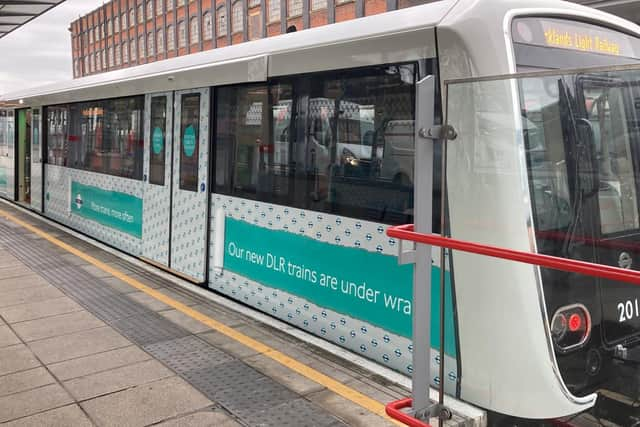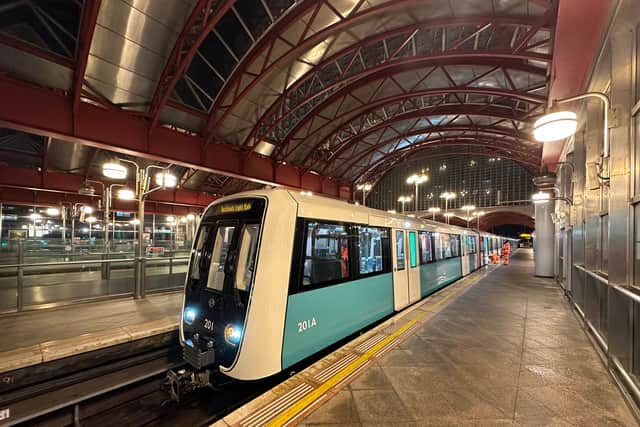DLR is getting a fleet of shiny new turquoise trains
and live on Freeview channel 276
The Docklands Light Railway (DLR) is getting an extra 11 new trains, as part of a fleet which will be introduced from next year.
The additional trains means a total of 54 new turquoise trains will enter service between 2024 and 2026, 33 of which will replace the DLR’s oldest rolling stock.
Advertisement
Hide AdAdvertisement
Hide AdThe other 21 will be used to boost capacity across the network.
The new trains will feature a walk-through design, latest audio and visual real time travel information, air conditioning and mobile device charge points


The new DLR trains have been funded by the Government’s Housing Infrastructure Fund and will be used to further increase capacity and help unlock 10,000 new homes across the network, particularly in the Royal Docks and on the Isle of Dogs.
Two of the new trains have been delivered and are already going through testing ahead of introduction from 2024.
Advertisement
Hide AdAdvertisement
Hide AdTesting is currently taking place in overnight engineering hours and during some planned closures but later this year customers will see test trains running during the day in gaps between normal services.


Seb Dance, Deputy Mayor for Transport, said: “More than 90 million journeys are made each year on the DLR. It is the busiest light railway in the UK and these new DLR trains will provide Londoners with more frequent, reliable and comfortable journeys from 2024.
“Each train will feature 10% more capacity and also provide better facilities for those with mobility impairments. The DLR is a vital transport option for east London and the Docklands area and these upgrades will support new jobs and homes in the area, helping to make London a greener, fairer and more prosperous city for all.”
Tom Page, TfL’s General Manager for the DLR, said: “These new DLR trains will transform the journeys of millions of existing customers but will also give us the opportunity to welcome many more as new jobs and homes are created in east London and the Docklands area.
Advertisement
Hide AdAdvertisement
Hide Ad“Testing is progressing well ahead of the trains being introduced from 2024 and I really look forward to welcoming this new fleet to help contribute to the DLR’s continuing success.”
All 54 new trains will be introduced by the end of 2026 and will help boost overall capacity on the network by more than 60%. Each train will feature 10% more capacity and also provide better facilities for those with mobility impairments with three multi-use areas in addition to three dedicated wheelchair spaces.
These multi-use areas can also be used to accommodate pushchairs, bicycles and luggage.
The DLR runs through six “opportunity areas” in London, said TfL, which have the potential to deliver more than 124,000 homes and 200,000 jobs
Comment Guidelines
National World encourages reader discussion on our stories. User feedback, insights and back-and-forth exchanges add a rich layer of context to reporting. Please review our Community Guidelines before commenting.
